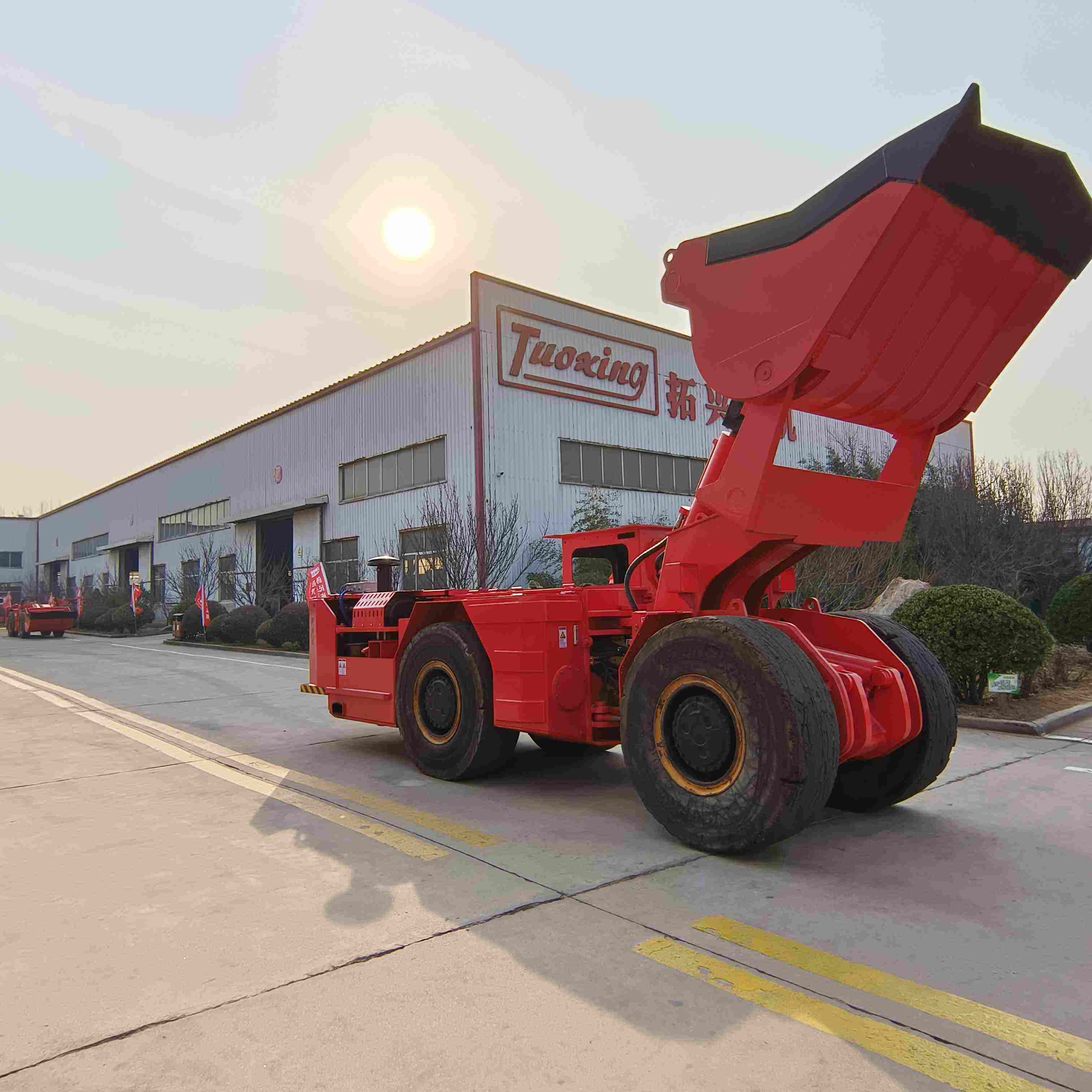การเข้าใจบทบาทของเครื่องทุบหินในเหมืองแร่ยุคใหม่
เครื่องบดหินเป็นอุปกรณ์ที่จําเป็น สําหรับการบดหินและหินเป็นชิ้นเล็กๆ บางอย่างที่จําเป็นมากสําหรับกิจกรรมการขุดหินส่วนใหญ่ เครื่องจักรที่พลังงานสูงเหล่านี้ ทํางานหนักในการบดหินขนาดใหญ่ ซึ่งเป็นส่วนสําคัญในการเอาแร่ธาตุออกจากฝังที่อยู่ใต้ดิน ลองจินตนาการดูว่าถ้าเราพยายามทําเหมืองแร่โดยไม่มีเครื่องจักรเหล่านี้ มันคงเป็นไปไม่ได้เลย ที่จะหาทรัพยากรที่มีค่าทั้งหมดที่ฝังอยู่ลึกใต้พื้นดิน บริษัทเหมืองแร่เชื่อมโยงกับเทคโนโลยีนี้มาก เพื่อทําให้การดําเนินงานของพวกเขาเป็นไปได้และมีประสิทธิภาพทางเศรษฐกิจในระยะเวลา
อุปกรณ์บดหินได้มาไกลในโลกการทําเหมืองแร่ ตั้งแต่คนเริ่มโยนหินใส่กันในวันนั้น คนทําเหมืองในโบราณ ใช้เครื่องมือง่ายๆ เช่น มวยและไม้จับในการทํางาน ซึ่งใช้เวลานานนาน และทําให้คนทํางานมีอันตรายต่อการบาดเจ็บ สิ่งต่างๆเริ่มเปลี่ยนแปลง เมื่อคนขุดเหมืองยุคกลาง พบเทคนิคการเผาไหม้ในช่วงยุคกลาง จากนั้นก็มีการเปลี่ยนแปลงอย่างยิ่ง กับสารระเบิด สีดํา ปูนดํา ในตอนแรกถูกตามด้วยดินไดนามิท ในยุคปฏิวัติอุตสาหกรรม ในช่วงเวลานี้ เครื่องจักรกลเริ่มปรากฏในเหมือง ทําให้การดําเนินงานปลอดภัยและรวดเร็วกว่า เร็วๆไปสู่โลกที่ทันสมัยวันนี้ ที่นวัตกรรมเทคโนโลยีสูงกําลังเปลี่ยนวิธีการที่หินจะแตกแยกลงอย่างสมบูรณ์แบบ ระบบใหม่เหล่านี้ไม่เพียงแต่เร็วกว่า แต่ยังช่วยลดความเสียหายต่อสิ่งแวดล้อม และการใช้พลังงาน
วิธีที่เครื่องทุบหินปฏิวัติกระบวนการทำเหมือง
การนําเทคโนโลยีที่ทันสมัยเข้าสู่เครื่องบดหินในปัจจุบัน ได้ช่วยให้เหมืองทํางานได้ดีขึ้น อุปกรณ์ที่ทันสมัยมีระบบที่ฉลาด ที่เพิ่มความเร็วในการประมวลผล และนําวัสดุผ่านได้มากกว่าต่อชั่วโมง ทําให้หินแตกออกเร็วกว่าเดิม การขุดเหมืองทั้งหมดเคลื่อนไหวเร็วขึ้น และทรัพยากรจะถูกนําออกมาในพื้นที่ได้อย่างมีประสิทธิภาพมากขึ้น ข้อมูลในอุตสาหกรรมแสดงให้เห็นว่าบริษัทที่เปลี่ยนไปใช้เครื่องบดหินใหม่เหล่านี้ จะเห็นผลประโยชน์จริงในพื้นที่ - เวลาที่เสียหายในการรอการซ่อมแซมน้อยลง และผลิตผลิตมากกว่ามากจากการดําเนินงานของพวกเขา ยกตัวอย่างของเครื่องตัดกระแทกของฟราคทัม พวกเด็กร้ายพวกนี้จัดการกับชิ้นใหญ่ๆ ที่ถูกพบไว้ โดยทําให้สายการผลิตเคลื่อนไหวโดยไม่ต้องหยุดงานอย่างน่ารําคาญ
การนําเครื่องบดหินอัตโนมัติมาใช้ได้ ทําให้ค่าแรงงานในภาคเหมืองแร่ลดลงมาก เมื่อเครื่องจักรเหล่านี้ถูกนําเข้ากับเครื่องบรรทุกเหมืองแร่และเครื่องบูลโดเจอร์ทั่วไป ก็จะไม่มีความจําเป็นต่อคนที่จะทํางานยกของหนักด้วยมือ ซึ่งจะทําให้ค่าจ้างลดลง เมื่อดูสิ่งที่เกิดขึ้นในอุตสาหกรรม เราเห็นว่าเหมืองจํานวนมากขึ้นไปเปลี่ยนไปใช้ระบบอัตโนมัติ เพราะมันช่วยประหยัดเงิน และทําให้คนทํางานหลีกเลี่ยงสถานการณ์อันตรายในใต้ดิน ลองดูตัวเลขจริงจากบริษัทที่เปลี่ยนไป หลายรายงานว่ามีอุบัติเหตุน้อยลงโดยรวม และมีบันทึกความปลอดภัยที่ดีขึ้นสําหรับพนักงานของพวกเขา สิ่งที่เราเห็นอยู่ตรงนี้ จริงๆแล้วคือการเปลี่ยนแปลงอย่างมากในวิธีการที่เหมืองแร่ทํางานในปัจจุบัน โดยเคลื่อนย้ายไปสู่วิธีการที่ปกป้องทั้งคนงานและบริษัท รายงานส่วนใหญ่ในอุตสาหกรรมสนับสนุนเรื่องนี้ แม้ว่าบางส่วนยังคงตามทันความเร็วของการเปลี่ยนแปลงเหล่านี้
ประโยชน์ด้านความปลอดภัยและการอนุรักษ์สิ่งแวดล้อมจากการใช้เครื่องทุบหิน
เครื่องบดหินมีบทบาทสําคัญในการทําให้การทําเหมืองหินปลอดภัยมากขึ้น โดยลดความเสี่ยงจากการเกิดอุบัติเหตุระหว่างงานหินหิน การ ทํา งาน ที่ ใหญ่ ๆ รายงานความปลอดภัยในเหมืองล่าสุดชี้ว่า ปัญหาเกิดขึ้นบ่อยๆ กับเครื่องขุด เมื่อถูกใช้ผิดวิธีในการบดหิน ข่าวดีคือ เครื่องบดหินถูกสร้างขึ้นเพื่อบดหิน โดยเฉพาะ เพื่อป้องกันปัญหาเหล่านี้ และยังรักษาความปลอดภัยของผู้ใช้งาน กรมควบคุมเหมืองแร่และอุตสาหกรรมของรัฐออสเตรเลียตะวันตก ได้บันทึกผลประโยชน์เหล่านี้อย่างกว้างขวาง
เครื่องมือบดหินรุ่นใหม่ที่สุด มีส่วนประกอบที่ดีขึ้นเพื่อสิ่งแวดล้อม เครื่องจักรที่ทันสมัย ลดระดับเสียงและการสั่นสะเทือน สิ่งที่สําคัญมาก ในการปกป้องสุขภาพของคนทํางาน และรักษาที่อยู่อาศัยของสัตว์ป่าที่อยู่ใกล้เคียง ผู้ผลิตกําลังทํางานหนัก เพื่อนําเทคโนโลยีที่ทันสมัยเข้าสู่การออกแบบของตัวเอง โดยสร้างเครื่องบดหิน ที่ทิ้งร่องรอยทางสิ่งแวดล้อมที่เล็กกว่า เราเห็นแนวโน้มนี้ตรงกับสิ่งที่หลายๆคนในภาคเหมืองแร่กําลังผลักดันให้มีการดําเนินงานที่ยั่งยืน ด้วยการที่บริษัทมากขึ้นและมากขึ้น เปลี่ยนไปใช้เครื่องมือที่ปรับปรุงขึ้นนี้ ดูเหมือนโลกการเหมืองแร่ จะเปลี่ยนไปสู่การทําความสะดวกในการสร้างกําไร
ความก้าวหน้าทางเทคโนโลยีในอุปกรณ์ทุบหิน
วิธีการที่เราบดหินได้เปลี่ยนแปลงอย่างมาก ขอบคุณการพัฒนาเทคโนโลยีใหม่ โดยเฉพาะอย่างยิ่งเมื่อมันมาถึงเครื่องจักรที่ใช้อัตโนมัติ และคุณสมบัติที่สมาร์ท เครื่องบดหินที่ทันสมัยหลายเครื่อง ตอนนี้มีการใช้เทคโนโลยี AI ซึ่งช่วยให้ผู้ใช้งานได้ผลที่ดีกว่าจากเครื่องจักรของพวกเขา ระบบที่ฉลาดเหล่านี้ มองข้อมูลการทํางานทุกชนิดตลอดเวลา ขณะที่กําลังทํางาน แล้วปรับเปลี่ยนสิ่งต่างๆ เพื่อให้ทุกอย่างทํางานได้เรียบร้อย สิ่งที่ทําให้มันมีค่ามากก็คือ เครื่องจักรสามารถทํางานได้เร็วขึ้นมาก โดยไม่เสียสละความแม่นยํา ซึ่งหมายความว่าบริษัทจะเห็นผลิตได้มากขึ้น นอกจากนี้ คนงานก็ไม่ต้องติดตามรายละเอียดทุกอย่างด้วยมืออีกต่อไป เพราะการปรับส่วนใหญ่เกิดขึ้นโดยอัตโนมัติ ผ่านระบบควบคุมที่ทันสมัย
ขั้นตอนสําคัญที่ก้าวไปข้างหน้า คือการเพิ่มการติดตามในเวลาจริง พร้อมกับความสามารถในการบํารุงรักษาแบบคาดการณ์ ระบบเหล่านี้ทําให้ผู้ประกอบการสามารถพบปัญหากับอุปกรณ์ได้นาน ก่อนที่ความเสียหายจะเกิดขึ้น ดังนั้นอายุการใช้งานของเครื่องบดหินหนักเหล่านี้ จะขยายออกไปอีกนิด แนวคิดทั้งหมดที่อยู่เบื้องหลังการบํารุงรักษาแบบคาดการณ์ คือการใช้ข้อมูลทั้งหมดที่รวบรวมมา เพื่อหาว่าเมื่อไหร่ที่บางสิ่งบางอย่างอาจต้องแก้ไข รายงานจากอุตสาหกรรมแสดงให้เห็นว่า บริษัทที่ใช้เทคโนโลยีนี้ มักจะเห็นเวลาหยุดทํางานน้อยลงประมาณ 30% ซึ่งทําให้เกิดความแตกต่างอย่างมาก สําหรับการดําเนินงาน ที่ทุกนาทีมีค่าในการทําให้เส้นการแปรรูปหินนั้นเคลื่อนไหวได้อย่างเรียบร้อย โดยไม่
นวัตกรรมทางเทคนิคเหล่านี้สะท้อนให้เห็นถึงความซับซ้อนที่เพิ่มขึ้นของเครื่องจักรสำหรับการแตกหิน ยืนยันบทบาทสำคัญของมันในงานเหมืองแร่และสถานที่ขุดหินสมัยใหม่ โดยการลดเวลาหยุดทำงานและเพิ่มประสิทธิภาพผ่านปัญญาประดิษฐ์ (AI) และเทคโนโลยีอัจฉริยะ ธุรกิจในภาคเหมืองแร่และสถานที่ขุดหินสามารถเพิ่มผลผลิตและลดต้นทุนการดำเนินงานได้
อนาคตของการทุบหินในเหมือง: แนวโน้มที่น่าจับตามอง
เทคโนโลยีใหม่กําลังเปลี่ยนวิธีการบดหินในเหมือง ทําให้การดําเนินงานเร็วขึ้น และทําให้เครื่องจักรทํางานนานกว่าระหว่างการซ่อม ความก้าวหน้าล่าสุดในวิทยาศาสตร์วัสดุและการออกแบบวิศวกรรม ได้สร้างความแตกต่างอย่างมากในอุปกรณ์การเหมืองแร่ การ ทํา งาน ที่ ดี ที่ สุด ใน การ ทํา งาน ที่ ดี ที่ สุด การปรับปรุงเหล่านี้ หมายความว่า เครื่องบรรทุกและรถบรรทุกใต้ดินของเรา ใช้งานได้นานกว่าเดิม ก่อนที่ต้องการอะไหล่ การทดลองในสนามแสดงว่าบางส่วนของวัสดุใหม่เหล่านี้ ลดการสกัดส่วนประมาณ 30% เมื่อเทียบกับส่วนประกอบเหล็กแบบดั้งเดิม สําหรับผู้ประกอบการเหมือง สิ่งนี้แปลว่า การประหยัดเงินจริงในการซื้ออะไหล่ และการหยุดทํางานน้อยลงในการรอการซ่อมแซม เมื่อตารางการผลิตค่อนข้างคับ
การปฏิบัติที่เขียวเข้มเริ่มเริ่มตั้งรากในภาคเหมืองแร่ โดยเฉพาะอย่างยิ่งเมื่อมันมาถึงการพัฒนาวิธีที่ดีกว่าในการหักหินโดยไม่เสียหายต่อสิ่งแวดล้อม ในช่วงนี้ ผู้คนสนใจธรรมชาติมากขึ้น การทําเหมืองแร่ทั่วโลก กําลังเปลี่ยนไปใช้วิธีที่ทิ้งรอยเล็กๆ บนระบบนิเวศ การเปลี่ยนแปลงนี้ไม่ได้แค่เกี่ยวกับการปฏิบัติตามกฎของรัฐบาล บริษัทพบว่าพวกเขาออมเงินในเวลาต่อเนื่องในขณะที่สร้างความสัมพันธ์ที่แข็งแกร่งขึ้นกับชุมชนท้องถิ่นที่อาศัยอยู่ใกล้กับการดําเนินงานของพวกเขา การ ปก ป้อง ความ สงสัย การเปลี่ยนแปลงเหล่านี้อาจดูเล็ก ๆ น้อย ๆ ในภาพแรก แต่รวมกันแล้ว มันแสดงให้เห็นถึงความก้าวหน้าจริง ๆ ในทางการจัดการทรัพยากรที่มีความรับผิดชอบ ในอุตสาหกรรมที่มีชื่อเสียงในประวัติศาสตร์สําหรับผลกระทบต่อสิ่งแวดล้อม
สรุป: ผลกระทบของการแตกหินต่อภูมิทัศน์การเหมืองแร่
การทําเหมืองแร่ได้เปลี่ยนแปลงมาก ตั้งแต่เครื่องบดหินเข้ามาในภาพ โดยหลักแล้วเพราะมันทําให้สิ่งต่างๆทํางานได้ดีขึ้น ความดีขึ้นที่สําคัญที่เราเห็นในช่วงหลังนี้ ก็คือวัสดุที่แข็งแรงกว่า ที่ใช้ในการก่อสร้าง และลักษณะการออกแบบที่ฉลาดกว่า ที่ทํางานได้ดีขึ้นในสภาพของโลกจริง การปรับปรุงนี้ทําให้เครื่องจักรใช้ได้นานขึ้น สําหรับคนทําเหมืองที่ทํางานทุกวัน สิ่งนี้สําคัญมาก ความปลอดภัยจะดีขึ้น เมื่ออุปกรณ์ไม่เสียบไปบ่อย และผลผลิตงานก็เพิ่มขึ้นด้วย บริษัทส่วนใหญ่พบว่าผลประโยชน์เหล่านี้คุ้มค่าที่จะลงทุน แม้ว่าจะมีต้นทุนเริ่มต้น
ภาคเหมืองแร่กําลังอยู่ใกล้กับการเปลี่ยนแปลงอย่างใหญ่หลวงในปีหน้า ด้วยเทคโนโลยีใหม่ที่เข้ามาในตลาดตลอดเวลา เรากําลังเห็นวิธีใหม่ๆ ในการบดหินและการขุดแร่ ซึ่งทําให้เห็นได้ชัดว่าทําไมการติดตามการอัพเดทเทคโนโลยี จึงสําคัญมากสําหรับเหมืองที่ต้องการที่จะมีความเกี่ยวข้อง การปรับปรุงเหล่านี้ช่วยให้บริษัทจัดการทุกอย่าง จากการเพิ่มต้นทุนการดําเนินงาน ถึงความกังวลด้านสิ่งแวดล้อม ผู้เชี่ยวชาญบางคนคาดการณ์ว่า อัตโนมัติและเซ็นเซอร์ที่ฉลาดกว่า จะสามารถลดการทิ้งของได้ถึง 30% ในบางการปฏิบัติงานในทศวรรษหน้า
สารบัญ
- การเข้าใจบทบาทของเครื่องทุบหินในเหมืองแร่ยุคใหม่
- วิธีที่เครื่องทุบหินปฏิวัติกระบวนการทำเหมือง
- ประโยชน์ด้านความปลอดภัยและการอนุรักษ์สิ่งแวดล้อมจากการใช้เครื่องทุบหิน
- ความก้าวหน้าทางเทคโนโลยีในอุปกรณ์ทุบหิน
- อนาคตของการทุบหินในเหมือง: แนวโน้มที่น่าจับตามอง
- สรุป: ผลกระทบของการแตกหินต่อภูมิทัศน์การเหมืองแร่

